|
Books Should Be Free Loyal Books Free Public Domain Audiobooks & eBook Downloads |
|
|
Books Should Be Free Loyal Books Free Public Domain Audiobooks & eBook Downloads |
|
Literature |
|---|
|
Book type:
Sort by:
View by:
|
By: Edgar Pangborn (1909-1976) | |
|---|---|
 The Good Neighbors
The Good Neighbors
| |
By: Edgar Rice Burroughs (1875-1950) | |
|---|---|
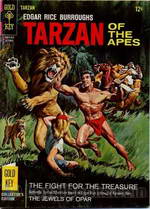 Tarzan of the Apes
Tarzan of the Apes
An aristocratic English family is marooned off the coast of West Africa. They find their way into the interior of the dense jungle that lines the coast and here, Lord Greystoke is killed by a predatory ape. Lady Greystoke survives with her infant boy, but in a few months, she too succumbs to the perils of jungle life. The baby is adopted by a maternal she-ape who nurses him along with her own child. This marks the dawn of a legend – Tarzan of the Apes. Edgar Rice Burroughs was an American novelist who turned to fiction writing after an unsuccessful stint as a pencil sharpener salesman... | |
 The Gods of Mars
The Gods of Mars
Burroughs’ second book in the classic Barsoom series, The Gods of Mars is a scientific fiction novel following the adventures of John Carter as he returns to Mars after a ten year hiatus in the hope of being reunited with his wife, child and the Red Martian people. First published as a five-part serial in a pulp magazine in the course of 1913, the novel was later published as a whole in 1918. A tale of audacity, honor, optimism, and perseverance, Burroughs successfully builds on to the previous book allowing a broader view of the Red Planet... | |
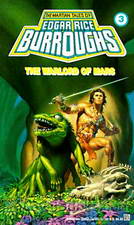 Warlord of Mars
Warlord of Mars
Warlord of Mars by Edgar Rice Burroughs was first published in 1913. It was the third book in an eleven part series known as the Barsoom Chronicles which relate to a sequence of exciting adventure tales set on the fictional planet of Barsoom. In the Barsoom series, Mars, assumed to be older than Earth, is a dying planet. “Barsoom” is the native word for Mars in the Martian language. The stories first appeared in serialized form in various magazines like All-Story, Argosy, Amazing Stories and The Blue Book... | |
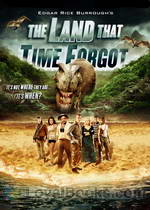 The Land that Time Forgot
The Land that Time Forgot
Off the coast of Greenland, a man finds a floating thermos bottle. Wedged tightly inside is a sheaf of papers covered with minute handwriting. As he begins to read, a fantastic tale begins to unwind. The writer, on his way to a WWI battlefield was shipwrecked and his entire regiment except for a woman and his faithful dog are killed. The three are rescued by a passing British tug, but fall prey to the schemes of a German spy aboard. They are then captured by the crew of a German U-boat. After many near mishaps, they sail towards Greenland... | |
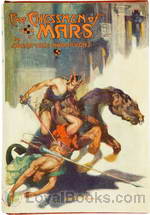 The Chessmen of Mars
The Chessmen of Mars
If you're a sci-fi fan, then you've probably heard of Edgar Rice Burroughs' famous Barsoom series of science fiction fantasy novels. Set in the “dying planet” Mars, the ten books in the series portray an Earthman, John Carter and his astral journey to the Red Planet, his marriage with a native princess and his descendants. The Chessmen of Mars is the fifth book in the Barsoom set, written in 1921 and published in serial form in Argosy magazine over the period of a year. Here, John Carter's daughter Tara meets Prince Gahan of the Gathol kingdom, but takes an instant dislike to the young and fashionable man, feeling that he is just a shallow youth... | |
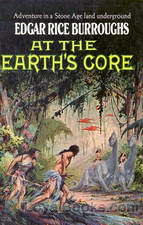 At the Earth's Core
At the Earth's Core
This is the first book in the Pellucidar series. Pellucidar is a fictional Hollow Earth milieu invented by Edgar Rice Burroughs for a series of action adventure stories. The stories initially involve the adventures of mining heir David Innes and his inventor friend Abner Perry after they use an “iron mole” to burrow 500 miles into the earth’s crust. (adapted from Wikipedia) | |
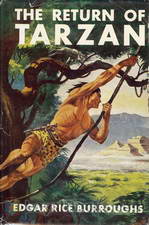 The Return of Tarzan
The Return of Tarzan
The novel picks up where Tarzan of the Apes left off. The ape man, feeling rootless in the wake of his noble sacrifice of his prospects of wedding Jane Porter, leaves America for Europe to visit his friend Paul d’Arnot. On the ship he becomes embroiled in the affairs of Countess Olga de Coude, her husband, Count Raoul de Coude, and two shady characters attempting to prey on them, Nikolas Rokoff and his henchman Alexis Paulvitch. | |
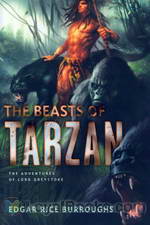 The Beasts of Tarzan
The Beasts of Tarzan
Originally featured as a five-part serial in All-Story Cavalier magazine in 1914 and later published in book form in 1916, The Beasts of Tarzan is the third book in the gripping Tarzan series. Shifting from London to the natural African scenery, the novel follows Tarzan as he finds himself in the wicked ploy of old enemies, which launches him into a mission to save his beloved wife and son, while also caring for his own welfare. Furthermore, he must go back to his previous life and reclaim his position as king of the jungle... | |
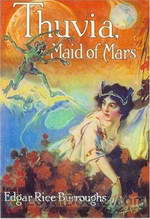 Thuvia, Maid of Mars
Thuvia, Maid of Mars
Published in 1920, Thuvia, Maid of Mars is the fourth book in the Barsoom series and concentrates on Carthoris, the son of infamous John Carter, and Thuvia, the princess of Ptarth, as they find themselves entangled in a complex web of love and strict traditions of Barsoom. A typical Burroughs piece, the installment contains all the required elements of an effective pulp fiction, including a hero, a damsel in distress, unforeseen complications, and a generous supply of action. Welcoming a new... | |
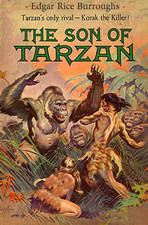 Son of Tarzan
Son of Tarzan
This is the fourth of Burrough’s Tarzan novels. Alexis Paulvitch, a henchman of Tarzan’s now-deceased enemy, Nikolas Rokoff, survived his encounter with Tarzan in the third novel and wants to even the score. (adapted from Wikipedia) | |
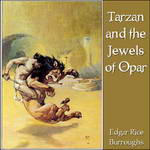 Tarzan and the Jewels of Opar
Tarzan and the Jewels of Opar
This is the fifth of Burrough’s Tarzan novels. Tarzan finds himself bereft of his fortune and resolves to return to the jewel-room of Opar, leaving Jane to face unexpected danger at home. | |
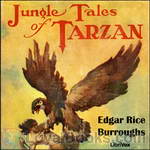 Jungle Tales of Tarzan
Jungle Tales of Tarzan
Jungle Tales of Tarzan is a collection of twelve loosely-connected short stories written by Edgar Rice Burroughs, comprising the sixth book in order of publication in his series about the title character Tarzan. Chronologically, the events recounted in it actually occur between chapters 12 and 13 of the first Tarzan novel, Tarzan of the Apes. | |
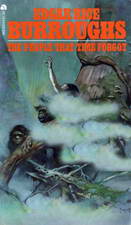 The People that Time Forgot
The People that Time Forgot
The People that Time Forgot is a science fiction novel, the second of Edgar Rice Burroughs’ “Caspak” trilogy. The first novel ended with the hero writing a manuscript of his adventures and casting it out to sea in his thermos bottle. The second novel begins with the finding of the manuscript and the organization of a rescue expedition. | |
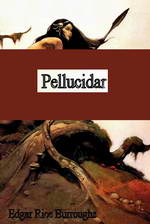 Pellucidar
Pellucidar
Pellucidar is a fictional “Hollow Earth” milieu invented by Edgar Rice Burroughs for a series of action adventure stories. The stories initially involve the adventures of mining heir David Innes and his inventor friend Abner Perry after they use an “iron mole” to burrow 500 miles into the earth’s crust. This is the second book in the series. | |
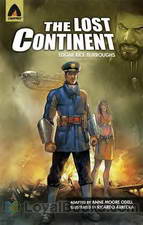 The Lost Continent
The Lost Continent
Originally published under the title Beyond Thirty. The novel, set in the year 2137, was heavily influenced by the events of World War I. In the future world depicted in the novel, Europe has descended into barbarism while an isolationist Western Hemisphere remains sheltered from the destruction. The title Beyond Thirty refers to the degree of longitude that inhabitants of the Western Hemisphere are forbidden to pass. | |
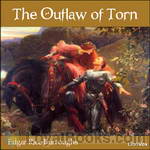 The Outlaw of Torn
The Outlaw of Torn
The story is set in 13th century England and concerns the fictitious outlaw Norman of Torn, who purportedly harried the country during the power struggle between King Henry III and Simon de Montfort. Norman is the supposed son of the Frenchman de Vac, once the king's fencing master, who has a grudge against his former employer and raises the boy to be a simple, brutal killing machine with a hatred of all things English. His intentions are partially subverted by a priest who befriends Norman and teaches him his letters and chivalry towards women... | |
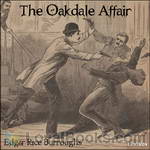 The Oakdale Affair
The Oakdale Affair
Edgar Rice Burroughs’ Jack London / H.H. Knibbs-inspired, selfless, poetry-spouting, hobo character, Bridge, makes another appearance in the novellete, The Oakdale Affair (original title, Bridge and the Oskalooska Kid.) Joining the poetic hobo in this gothic-like tale are many other unusual elements: dark mysterious nights, a deserted haunted farmhouse, a violent thunderstorm, the Oskalooska Kid, a nameless girl, thieves and murderers, Beppo the bear, and other surprises.The Oakdale Affair is a deep mystery and would puzzle even Sherlock Holmes.(Introduction by Ralph Snelson) | |
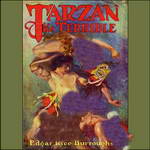 Tarzan the Terrible
Tarzan the Terrible
In the previous novel, during the early days of World War I, Tarzan discovered that his wife Jane was not killed in a fire set by German troops, but was in fact alive. In this novel two months have gone by and Tarzan is continuing to search for Jane. He has tracked her to a hidden valley called Pal-ul-don, which means "Land of Men." In Pal-ul-don Tarzan finds a real Jurassic Park filled with dinosaurs, notably the savage Triceratops-like Gryfs, which unlike their prehistoric counterparts are carnivorous... | |
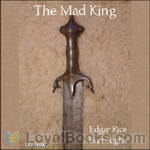 The Mad King
The Mad King
Shades of The Prisoner of Zenda! All our old friends are here—the young king, the usurping uncle and his evil henchman, the beautiful princess, the loyal retainer and the unwilling imposter. What more could you Hope for? This fast-paced story stays far away from Tarzan’s jungle or the inner world of Pellucidar. | |
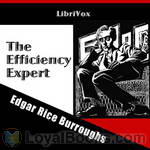 The Efficiency Expert
The Efficiency Expert
Our hero, Jimmy Torrance, Jr., has a hard time finding suitable employment after a brilliant (athletically, at least) college career, despite all kinds of assistance from his friends in the underworld and the wealthy and sophisticated young woman with whom he falls in love. Set in contemporary America, mostly Chicago, this 1921 short novel is one of a handful of Burrough’s works that does not take us to a fantasy or an exotic setting. (Delmar H. Dolbier) | |
 Tarzan the Untamed
Tarzan the Untamed
This book follows Tarzan and the Jewels of Opar chronologically. The action is set during World War I. While away from his plantation home in East Africa, invading German troops destroy it and kill his wife Jane and the Waziri warrior Wasimbu who is left crucified. Tarzan's search for vengeance is filled with much danger, many fierce fights and tons of action as he becomes active in the war on the British side. This is really just the start of the exciting adventures portrayed in this book. | |
By: Edgar Rice Burroughs (1875-1950) | |
|---|---|
 Girl From Hollywood
Girl From Hollywood
The countryside outside of Los Angeles is a paradise on Earth: nature gives bounty on the land, the animals are majestic, the oaks breathe and the natural pools and ponds are all you would want on a summer's day. And if you are a Pennington or an Evans, life is simple and complete. However, every paradise has a serpent. For Rancho Ganado, that comes in the shape of Bootlegging, Drugs and Murder. All the vice of nearby Hollywood manifest themselves in the picturesque landscape, throwing the lives of these families into turmoil. - Summary by Joseph DeNoiaProof-listened by KevinS and linny | |
By: Edgar Saltus (1855-1921) | |
|---|---|
 The Paliser case
The Paliser case
| |
By: Edgar Wallace (1875-1932) | |
|---|---|
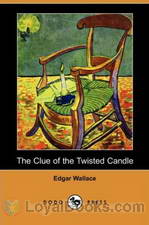 The Clue of the Twisted Candle
The Clue of the Twisted Candle
This story describes a house in Cadogan Square, London, in which extensive alterations have been done by the Greek owner. One of the rooms is built like a safe. The walls floor and roof are made of almost indestructible reinforced concrete. The only door to the room can only be opened or closed by the owner. The single window is unreachable and there is a steel safe built into the outer wall which is in plain sight of the local policeman who patrols the street every night. Yet it is in this barred and shuttered room that the Greek is found brutally murdered... | |
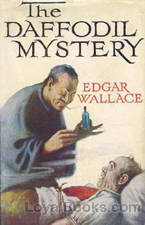 The Daffodil Mystery
The Daffodil Mystery
Set in England at the turn of the 20th century, Wallace’s crime novel The Daffodil Mystery follows the mysterious circumstances under which shop owner Lyne has been murdered. Accordingly, it is up to detective Jack Tarling and his trusted Chinese assistant to solve the case and reach an appropriate and just resolution. Moreover, the happenings within the novel are intensified by the colorful set of characters, which are marked by their plausible façade and contribute to the novel’s appeal... | |
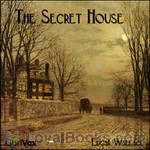 The Secret House
The Secret House
A stranger and foreigner arrives at the offices of a small publication in London only to be faced by the “editor” whose face is completely swathed in a veil. Nothing is as it seems, and it quickly becomes evident that both are bent on more than lively gossip about the elite. Blackmail and opportunism is the order of the day. When two men are found shot to death outside the door of Mr. Farrington the millionaire who just happens to live a few doors from T. B. Smith, the head of the secret police, the connections to blackmail are not long in coming. Were these men shot by the blackmailer? Who is actually what he seems to be? | |
 The Man Who Knew
The Man Who Knew
| |
 Bones Being Further Adventures in Mr. Commissioner Sanders' Country
Bones Being Further Adventures in Mr. Commissioner Sanders' Country
| |
 Bones in London
Bones in London
| |
 The Keepers of the King's Peace
The Keepers of the King's Peace
| |
 Jack O' Judgment
Jack O' Judgment
| |
By: Edison Marshall (1894-1967) | |
|---|---|
 The Snowshoe Trail
The Snowshoe Trail
| |
 The Sky Line of Spruce
The Sky Line of Spruce
| |
By: Edith B. Ordway (1877-) | |
|---|---|
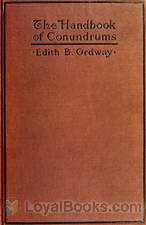 The Handbook of Conundrums
The Handbook of Conundrums
| |
By: Edith Birkhead (1889-1951) | |
|---|---|
 Tale of Terror: A Study of the Gothic Romance
Tale of Terror: A Study of the Gothic Romance
A seminal essay on the development of horror as a genre, highly influential on later writers. | |
By: Edith M. (Edith Marion) Patch (1876-) | |
|---|---|
 Bird Stories
Bird Stories
| |
By: Edith Nesbit (1858-1924) | |
|---|---|
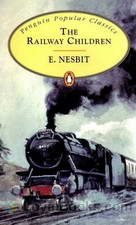 Railway Children
Railway Children
A thrilling spy story, a children's adventure, a charming portrait of early twentieth century life in London and the countryside and a heart warming family tale are all combined in this classic of children's literature The Railway Children by E Nesbit. The book has remained on the list of the best-loved children's books ever since it was first published as a serial story in The London Magazine in 1905. Later, it was published in book form and won acclaim from critics and readers across the world for its wonderful elements of character and plot... | |
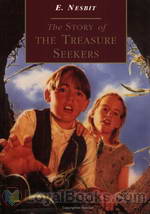 The Story of the Treasure Seekers
The Story of the Treasure Seekers
The six Bastable children are plunged into grief when their mother dies and their father's business partner cheats him of all his money. As a result, he loses not only his fortune but also his good name. However, the children decide to lend a hand. Determined to restore both, the children set out to find some way of making money. A variety of amusing and exciting events follow as they plunge into a series of scrapes in search of a legendary lost treasure. Published in 1899, The Story of the Treasure Seekers by E Nesbit was her first children's novel... | |
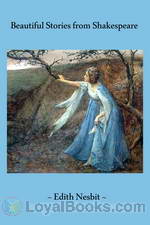 Beautiful Stories from Shakespeare
Beautiful Stories from Shakespeare
Opening with an introduction to the life of the most famous Englishman of all, William Shakespeare, Edith Nesbit captures the reader's imagination in her inimitable way. Beautiful Stories from Shakespeare is a compendium of stories that re-tells some of his most famous plays. As the author of some of the best-loved children's classics like The Railway Children and The Story of the Treasure Seekers, E Nesbit always felt that children should be introduced to Shakespeare in an easier and more enjoyable way... | |
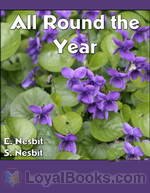 All Round the Year
All Round the Year
A light and whimsical collection of poems by the celebrated children’s author E Nesbit, in collaboration with Saretta Nesbit. | |
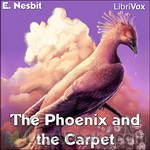 The Phoenix and the Carpet
The Phoenix and the Carpet
The Phoenix and the Carpet is a fantasy novel for children, written in 1904 by E. Nesbit. It is the second in a trilogy of novels that began with Five Children and It (1902), and follows the adventures of the same five protagonists – Cyril, Anthea, Robert, Jane and the Lamb. Their mother buys the children a new carpet to replace the one from the nursery that was destroyed in an unfortunate fire accident. Through a series of exciting events, the children find an egg in the carpet which cracks into a talking Phoenix. The Phoenix explains that the carpet is a magical one that will grant them three wishes per day. | |
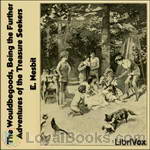 The Wouldbegoods, Being the Further Adventures of the Treasure Seekers
The Wouldbegoods, Being the Further Adventures of the Treasure Seekers
The Bastable children, first met in The Treasure Seekers, are sent to stay in the countryside; is it large enough to contain their exuberant activities? They (and Pincher the dog) have every intention of being good… | |
 Many Voices (selection from)
Many Voices (selection from)
E. Nesbit (Edith Bland) was a prodigious 19th century children’s writer who produced over 60 books of fiction for children. This book of poems has many elements which would appeal to children but there’s also some exploration of her feelings of love, lust and longing which your average 10 year old would find downright yucky. There are also moments of joy, moments of sugary sweetness and moments of sharp insight in this collection which contains views from many angles. Recurring themes of love, death, gardens and fairies give us a fine insight into the lively imagination of E. Nesbit. Summary by Jim Mowatt. | |
 Story of the Amulet
Story of the Amulet
The third of the series featuring Cyril, Anthea, Robert and Jane: four children who are, as they often say, "the sort of people that wonderful things happen to". In 'Five Children and It' they were lucky enough to meet the magical, wish-granting Psammead - and in this final book they meet him once again. He guides them to an ancient Amulet that will help them find their hearts' desire - but it's only half an amulet, and seeking for the other half has them whizzing about through time on another series of amazing adventures. | |
 Oswald Bastable and Others
Oswald Bastable and Others
| |
 Rainbow and the Rose
Rainbow and the Rose
A collection of poetry in the whimsical style of Edith Nesbit, author of "The Five Children and It" and "The Railway Children". These poems are primarily for adults, although a few are written for her daughters. The majority are philosophical reflections on Edith Nesbit's life as a wife and mother, and theological reflections on Christianity and faith, the nature of the world, life and death. | |
 In Homespun
In Homespun
| |
By: Edith Wharton | |
|---|---|
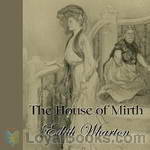 The House of Mirth
The House of Mirth
Wharton's classic story of an aging (by Victorian-era standards) spinster socialite who would rather marry for money than for true love. | |
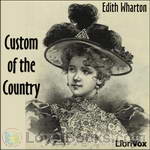 Custom of the Country
Custom of the Country
Edith Wharton was a novelist of manners of late 19th Century New York “Society”, who spent much of her life in France. In this novel she tells the story of Undine Sprague, the thrice- (or more) married, upwardly mobile beauty from “Apex City”, transplanted to New York, and finally to France, leaving the dead and wounded in the wake of her “experiments in happiness”. | |
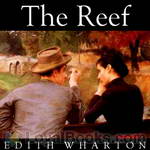 The Reef
The Reef
George Darrow, Anna Leath’s first love, is finally coming from London to propose to her. However, he drifts to an affair with Sophy Viner, Anna’s daughter’s naïve and young governess. Sophy’s relationship with Darrow and Anna’s family can threaten his success. In this novel, as in many of Wharton’s other well known novels, we see the eternal love triangle. With her sly and lovely writing style, Wharton delivers to us in this wonderful novel a cast of unforgettable characters and many unforgettable scenes which we can vividly imagine. What would Darrow choose: success or love? Would Anna marry him despite his affair with Sophy? (Summary by Stav Nisser.) | |
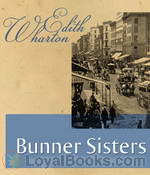 Bunner Sisters
Bunner Sisters
“Bunner Sisters,” like “The Age of Innocence” is set in 1870s New York, however the lives of Ann Eliza and Evelina Bunner reflect impoverished New York. The sisters run a “very small shop, in a shabby basement, in a sidestreet already doomed to decline.” Shabby as it is, the sisters are happy in their small orderly community of supportive women. The story tells of the destruction of this life, and how the once content sisters are thrown into the realistic world outside of their little shop. | |
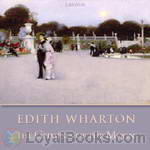 The Glimpses of the Moon
The Glimpses of the Moon
"The Glimpses of the Moon" (1922) is about Nick and Susy Lansing, both of whom live a decadent life in Europe by sponging off wealthy friends. They marry out of convenience and have an "open" relationship, but are unprepared for where their feelings will take them. | |
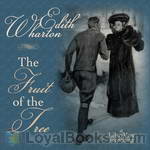 The Fruit of the Tree
The Fruit of the Tree
When published in 1907, this novel about the lives of a wealthy mill owner, her socially progressive husband and friends caused a stir due to its treatment of drug abuse, mercy killing, divorce and second marriages. | |
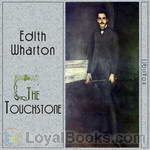 The Touchstone
The Touchstone
Stephen Glennard's career is falling apart and he desperately needs money so that he may marry his beautiful fiancee. He happens upon an advertisement in a London magazine promising the prospect of financial gain. Glennard was once pursued by Margaret Aubyn, a famous and recently deceased author, and he still has her passionate love letters to him. Glennard removes his name from the letters and sells them, making him a fortune and building a marriage based on the betrayal of another. | |
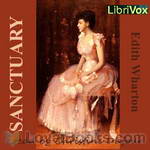 Sanctuary
Sanctuary
Kate Orme, shocked by the discovery of her fiance's complicity in a tragedy, and by society's willingness to overlook such transgressions, nevertheless marries him. Years later, her son faces a moral crisis similar to the one that showed her his father's moral weakness. (Introduction by Christine Dufour) | |
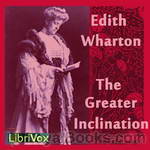 The Greater Inclination
The Greater Inclination
This is Edith Wharton's earliest published collection of short stories (1899). Like much of her later work, they touch on themes of marriage, male/female relationships, New York society, and the nature and purpose of art. One of the stories, "The Twilight of the God," is written as a short play. The role of Warland is read by mb, and the role of Oberville by Bruce Pirie. | |
 Crucial Instances
Crucial Instances
This is Edith Wharton's second published collection of short stories (1901). One of these seven stories, "Copy: A Dialogue," is written as a short play. The role of Hilda is read by Arielle Lipshaw, and the role of Ventnor by Mark F. Smith. | |
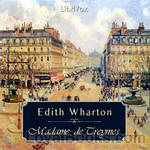 Madame de Treymes
Madame de Treymes
Edith Wharton's 1907 novella explores the milieu of Americans living abroad in Paris. New Yorker John Durham travels to Paris to woo an old flame, Fanny Frisbee, now the Marquis de Malrive. Fanny is separated from her husband and wants to marry John and return to America, but she doubts whether her Catholic husband will grant her a divorce. When John meets Fanny's sister-in-law, the enigmatic Madame de Treymes, he hopes she may be able to help them in their quest for happiness. (Introduction by Elizabeth Klett) | |
 The Early Short Fiction of Edith Wharton — Part 1
The Early Short Fiction of Edith Wharton — Part 1
| |
 Tales of Men and Ghosts
Tales of Men and Ghosts
Tales of Men and Ghosts was published as a collection in 1910, though the first eight of the stories had earlier appeared in Scribner's and the last two in the Century Magazine. Despite the title, the men outnumber the ghosts, since only "The Eyes" and "Afterward" actually call on the supernatural. In only two of the stories are women the central characters, though elsewhere they play important roles. Wharton enjoys subjecting her subjects -- all of them American gentlemen and gentlewomen, in the conventional senses of the word -- to various moral tests and sometimes ironic tests... | |
 The Descent of Man and Other Stories
The Descent of Man and Other Stories
| |
 Xingu 1916
Xingu 1916
| |
 The Hermit and the Wild Woman
The Hermit and the Wild Woman
| |
 Coming Home 1916
Coming Home 1916
| |
 The Triumph Of Night 1916
The Triumph Of Night 1916
| |
 The Choice 1916
The Choice 1916
| |
 Kerfol 1916
Kerfol 1916
| |
 Autres Temps... 1916
Autres Temps... 1916
| |
 Artemis to Actaeon, and Other Verses
Artemis to Actaeon, and Other Verses
| |
By: Edmond About (1828-1885) | |
|---|---|
 The Man With The Broken Ear
The Man With The Broken Ear
| |
By: Edmond de Goncourt (1822-1896) | |
|---|---|
 Germinie Lacerteux
Germinie Lacerteux
| |
 Renée Mauperin
Renée Mauperin
| |
By: Edmond Hamilton | |
|---|---|
 The Stars, My Brothers
The Stars, My Brothers
Edmond Hamilton (1904 – 1977) had a career that began as a regular and frequent contributor to Weird Tales magazine. The first hardcover publication of Science Fiction stories was a Hamilton compilation, and he and E.E. “Doc” Smith are credited with the creation of the Space Opera type of story. He worked for DC Comics authoring many stories for their Superman and Batman characters. Hamilton was also married to fellow author Leigh Brackett. – Published in the May, 1962 issue of Amazing Stories “The Stars, My Brothers” gives us a re-animated astronaut plucked from a century in the past and presented with an alien world where the line between humans and animals is blurred. | |
 The Man Who Saw the Future
The Man Who Saw the Future
| |
 The Sargasso of Space
The Sargasso of Space
| |
By: Edmond Malone (1741-1812) | |
|---|---|
 Cursory Observations on the Poems Attributed to Thomas Rowley (1782)
Cursory Observations on the Poems Attributed to Thomas Rowley (1782)
| |
By: Edmond Rostand (1868-1918) | |
|---|---|
 L'Aiglon
L'Aiglon
| |
 The Romancers A Comedy in Three Acts
The Romancers A Comedy in Three Acts
| |
By: Edmund Burke (1729-1797) | |
|---|---|
 Thoughts on the Present Discontents, and Speeches, etc.
Thoughts on the Present Discontents, and Speeches, etc.
| |
By: Edmund Day (1866-1923) | |
|---|---|
 The Round-Up A romance of Arizona novelized from Edmund Day's melodrama
The Round-Up A romance of Arizona novelized from Edmund Day's melodrama
| |
By: Edmund Goldsmid | |
|---|---|
 Quaint Gleanings from Ancient Poetry
Quaint Gleanings from Ancient Poetry
| |
By: Edmund Gosse (1849-1928) | |
|---|---|
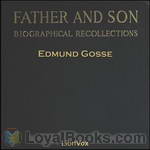 Father and Son
Father and Son
Father and Son (1907) is a memoir by poet and critic Edmund Gosse, which he subtitled “a study of two temperaments.” The book describes Edmund’s early years in an exceptionally devout Plymouth Brethren home. His mother, who dies early and painfully of breast cancer, is a writer of Christian tracts. His father, Philip Henry Gosse, is an influential, though largely self-taught, invertebrate zoologist and student of marine biology who, after his wife’s death, takes Edmund to live in Devon... | |
 Gossip in a Library
Gossip in a Library
A collection of informal essays about books in his library. He combines commentary, translations, and humorous asides about authors and their subjects. | |
 Victorian Songs Lyrics of the Affections and Nature
Victorian Songs Lyrics of the Affections and Nature
| |
 Henrik Ibsen
Henrik Ibsen
| |
 Some Diversions of a Man of Letters
Some Diversions of a Man of Letters
| |
 Hypolympia Or, The Gods in the Island, an Ironic Fantasy
Hypolympia Or, The Gods in the Island, an Ironic Fantasy
| |
By: Edmund Lester Pearson (1880-1937) | |
|---|---|
 The Voyage of the Hoppergrass
The Voyage of the Hoppergrass
| |
By: Edmund Mitchell (1861-1917) | |
|---|---|
 Tales of Destiny
Tales of Destiny
| |
By: Edmund Spenser (1552-1599) | |
|---|---|
 Brittains Ida or Venus and Anchises
Brittains Ida or Venus and Anchises
While hunting, the boy Anchises stumbles upon Venus's forest retreat and is so kindly entertained by the goddess that he becomes the proud father of Aeneas, the hero of Vergil's Aeneid. The poem is an epyllion like Marlowe's "Hero and Leander" and Shakespeare's "Venus and Adonis," a short erotic poem with a mythological subject. The style is Spenserian, the stanzas rhyming ababbccc. When Brittain's Ida was published in 1628, the publisher ascribed it to Edmund Spenser. However, in 1926 Ethel Seaton discovered and published Fletcher's original manuscript, whose opening stanzas make clear that this is the work of Fletcher, who entitled it "Venus and Anchises." | |
By: Edmund Venables (1819-1895) | |
|---|---|
 The Life of John Bunyan
The Life of John Bunyan
| |
By: Edna Adelaide Brown | |
|---|---|
 The Spanish Chest
The Spanish Chest
| |
By: Edna Ferber (1885-1968) | |
|---|---|
 Fanny Herself
Fanny Herself
Fanny Herself is the story of Fanny Brandeis, a sensitive, young Jewish girl coming of age in the Midwest at the turn of the 20th century. It is generally considered to have been based on Ferber’s own experiences growing up in Appleton, Wisconsin. Fanny’s inner struggle between her compassionate, artistic side and her desire for financial independence as a successful young businesswoman is the recurring theme of the novel. Ferber’s engaging style of writing will quickly draw you into her story... | |
 Dawn O'Hara, The Girl Who Laughed
Dawn O'Hara, The Girl Who Laughed
Dawn O’Hara, the Girl Who Laughed was Edna Ferber’s first novel. Dawn, a newspaperwoman working in New York, finds herself back home in Michigan on doctor’s orders. Years of living in boarding-houses and working to pay for the care of her brilliant but mentally ill husband, Peter Orme, have taken their toll. At twenty-eight, Dawn feels like an old woman with no future. But, the loving care of her sister Norah and her family along with the attentions of the handsome German doctor, Ernst Von Gerhard, slowly bring Dawn back to life... | |
 Buttered Side Down
Buttered Side Down
"And so," the story writers used to say, "they lived happily ever after." Um-m-m—maybe. After the glamour had worn off, and the glass slippers were worn out, did the Prince never find Cinderella's manner redolent of the kitchen hearth; and was it never necessary that he remind her to be more careful of her finger-nails and grammar? After Puss in Boots had won wealth and a wife for his young master did not that gentleman often fume with chagrin because the neighbors, perhaps, refused to call on the lady of the former poor miller's son? It is a great risk to take with one's book-children... | |
 One Basket
One Basket
This sparkling collection of 7 short stories by Ferber including some that are considered her all time best like The Woman Who Tried To be Good and The Maternal Feminine. Writing for and about women, Edna Ferber touches the very heart and soul of what it means to be human; to make good choices and bad; to be weak and strong. This was a very popular book when published in 1913 | |
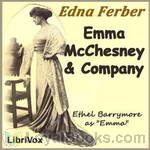 Emma McChesney and Company
Emma McChesney and Company
This is the final volume in the trilogy following the smart, stylish, divorced and independent businesswoman Emma McChesney in her career from stenographer, then drummer (traveling salesman) to owner of her own company. (The first was Roast Beef, Medium and the second Personality Plus). Edna Ferber first gained success with these stories and later went on to write Show Boat, Giant and other well known books. First published in 1915, Emma's son, Jock, has moved to Chicago with his new wife. Emma decides to sell in South America and proves she has not lost her magic touch... | |
 So Big
So Big
The story of Selina DeJong and her son Dirk, whom she affectionately calls So Big. After the death of her husband, Selina raises So Big on her own while managing her deceased husband's farm in Illinois. When So Big grows up, he moves to Chicago, where he finds himself drawn to the fast-money stock-broker lifestyle of the 1920s. So Big is conflicted: he wants to live in the world of speculation and finance, but he's aware that his mother are disappointed that he hasn't lived up to the hard-working, hardscrabble values instilled by his mother. - Summary by Alexandra Atiya | |
By: Edna Lyall (1857-1903) | |
|---|---|
 The Autobiography of a Slander
The Autobiography of a Slander
The Autobiography of a Slander exposes the consequences of reckless words or, even worse, intentionally disparaging words. In this moral tale, told from the point of view of "the slander", Edna Lyall (pseudonym used by Ada Ellen Bayley) reveals her ideals and goals in life and relationships. | |